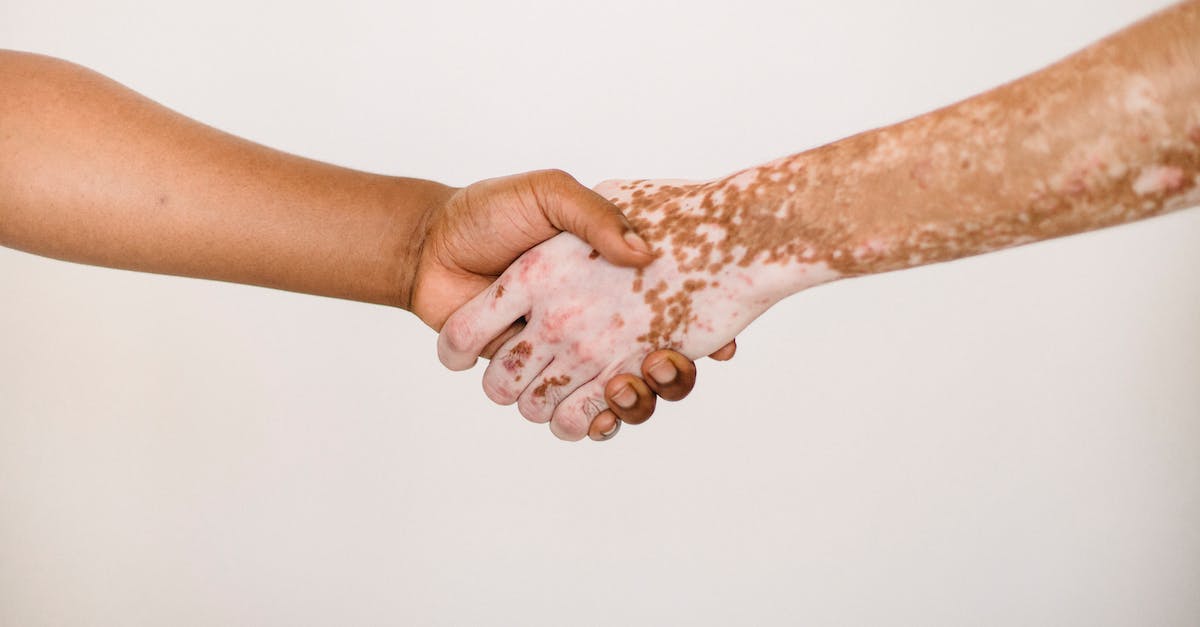Business
Simple Steps for Successfully Introducing Bunnies and Creating a Happy Bond
Learn how to introduce bunnies and create a lasting bond! Discover tips for providing a safe environment, equal attention, and establishing routines. Find out about enrichment activities, supervised playtime, and practicing patience. Foster a harmonious bond and promote bunny well-being!
Published
1 year agoon

Hey there! Are you thinking about adding a furry friend to your family? Well, introducing bunnies can be an adorable and rewarding experience. But before you dive into bunny bonding, there are a few things you need to know to ensure a smooth introduction. In this article, I’ll share some expert tips on how to introduce bunnies and help them build a strong and loving relationship. From creating a neutral space to understanding their body language, we’ll cover everything you need to know to make this process a hoppy success. So, let’s get started and bring these fluffy cuties together!
Introducing bunnies can be a bit tricky, as rabbits are naturally territorial creatures. But fear not, my friend! With the right approach, you can help your bunnies become the best of pals. In this article, I’ll walk you through the step-by-step process of introducing bunnies and fostering a harmonious bond. From gradual introductions to supervised playtime, we’ll explore the techniques that will make your bunnies hop with joy. So, if you’re ready to embark on this heartwarming journey of bunny companionship, keep reading to discover the secrets of successful bunny introductions.
Creating a Neutral Space
When it comes to introducing bunnies, one of the most important steps is creating a neutral space where they can meet for the first time. This neutral territory allows both bunnies to feel equal and reduces the chances of territorial behavior or aggression. Here’s how you can create a neutral space for your bunnies:
- Choose a neutral area: Find a space in your home that neither bunny has claimed as their own territory. This could be a room that is unfamiliar to both bunnies, such as a bathroom or a playroom. Make sure the space is free of any strong smells or markings from other animals.
- Clean the area: Thoroughly clean the neutral area to remove any scent markings that may trigger territorial behavior. Use a mild, pet-safe cleaner and make sure to rinse well. This will help create a blank canvas for the bunnies to explore without feeling threatened.
- Remove any hiding spots: Bunnies may feel more confident if there are no hiding spots in the neutral area. This will encourage them to interact and explore their surroundings. However, make sure there are still places for them to retreat to if they become overwhelmed or scared.
- Introduce familiar objects: Place some of each bunny’s belongings in the neutral area, such as toys, blankets, or litter boxes. These familiar scents will help them feel more at ease and create a sense of familiarity in the new environment.
- Supervise the initial meeting: When you’re ready to introduce the bunnies to each other, make sure it’s in a controlled environment. Keep a watchful eye and be prepared to intervene if any aggressive behavior occurs. Gradually increase the length of their supervised interactions as they become more comfortable with each other.
By creating a neutral space, you are setting the stage for a successful introduction between your bunnies. This step allows them to get to know each other without feeling threatened and sets the foundation for a strong and loving bond. Stay tuned for the next section where we’ll delve into the intricacies of understanding bunny body language.
Understanding Bunny Body Language
When introducing bunnies, it’s important to pay close attention to their body language. Bunnies communicate through various body movements and signals, and understanding these cues can help ensure a smooth and successful introduction process. Here are some key aspects to consider when deciphering bunny body language.
Ears
A bunny’s ears can tell you a lot about their mood and intentions. When their ears are erect and facing forward, it usually indicates that they are curious and attentive. On the other hand, if their ears are flattened against their back, it may be a sign of fear or aggression. Observe the position of their ears carefully to gauge their comfort level.
Eyes
Bunnies have expressive eyes that can convey different emotions. Bright and alert eyes generally mean that they are feeling calm and content. However, if their eyes are bulging or wide open, it may indicate that they are startled or stressed. Take note of their eye expressions to understand their overall state of mind.
Body Posture
The way a bunny carries itself can convey important messages. A relaxed and loose body posture with a slightly arched back shows that they are comfortable and at ease. Conversely, if their body appears tense and hunched, it may indicate anxiety or aggression. Pay attention to the overall body posture to assess their emotional state.
Tail
A bunny’s tail can also provide insights into their emotions. A relaxed and down-turned tail generally means that they are calm and content. However, if their tail is raised and puffed up, it may indicate excitement or fear. Keep an eye on their tail movements for a better understanding of their current mood.
Vocalization
While bunnies are not known for being particularly vocal, they do have a few ways to communicate audibly. Soft purring sounds usually indicate relaxation and contentment. In contrast, loud growls or shrieks may suggest aggression or fear. Listen carefully to any vocalizations they make to gain further insight into their emotional state.
Understanding bunny body language is essential when introducing bunnies. It allows you to interpret their feelings and responses accurately, helping you intervene if necessary. By observing their ears, eyes, body posture, tail, and vocalizations, you can foster a positive and harmonious environment for your bunnies to bond and build a strong relationship.
Gradual Introductions
When it comes to introducing bunnies to one another, it’s important to take it slow and allow for gradual introductions. This approach helps minimize stress and increases the chances of a successful bond between the bunnies. Here are some key steps to follow for a smooth and gradual introduction process:
- Initial Encounters: Start by allowing the bunnies to see and smell each other without direct physical contact. This can be done by placing their enclosures side by side or using a mesh barrier to separate them. Allow them to become familiar with each other’s scents and behavior before moving on to the next step.
- Supervised Play Dates: Once the bunnies show signs of being comfortable and relaxed during the initial encounters, you can start organizing supervised play dates. These play dates should take place in a neutral area, away from both bunnies’ usual territories, to prevent territorial behavior. Keep a close eye on their interactions and intervene if any aggressive behavior or chasing occurs.
- Increasing Interaction Time: As the bunnies become more comfortable with one another, gradually increase the amount of time they spend together. Start with short periods, gradually working your way up to longer sessions. Observe their behavior to ensure they are getting along well and adjusting to each other’s presence.
- Shared Confinement: When the bunnies consistently display positive behavior during supervised play dates, you can consider allowing them to share the same enclosure for short periods of time. Ensure that the enclosure is large enough to provide separate spaces for each bunny to retreat to if needed. Monitor their interactions closely and be prepared to separate them if any aggression occurs.
By following these steps and allowing for gradual introductions, you can create a solid foundation for a strong bond between your bunnies. Remember that every bunny is unique, and the introduction process may vary depending on their personalities. Be patient and allow them to progress at their own pace, always prioritizing their well-being and comfort.
Next, let’s explore the importance of positive reinforcement during the introduction process.
Supervised Playtime
During the introduction process, supervised playtime is a crucial step in helping bunnies form a bond and develop a positive relationship. This is the time where the bunnies can interact with each other under close observation to ensure their safety and well-being.
Here are a few tips to ensure a successful supervised playtime:
- Choose a neutral area: Like in the initial encounters, it’s important to select a neutral space for supervised playtime. This will prevent any territorial behavior and give both bunnies an equal chance to explore and interact.
- Keep it short and gradual: Start with short play sessions, gradually increasing the duration as the bunnies become more comfortable with each other. This will help prevent any tensions or conflicts from arising and allow the bunnies to adjust at their own pace.
- Observe their body language: Pay close attention to the bunnies’ body language during playtime. Look for signs of aggression, fear, or stress, such as lunging, growling, or excessive hiding. If you observe any negative behavior, separate the bunnies and try again later.
- Provide enrichment: To help keep the bunnies engaged and distracted during playtime, provide them with toys and tunnels. This will encourage exploration and play, fostering a positive environment for bonding.
- Supervise without interfering: While it’s important to monitor the bunnies’ interactions, try not to interfere unless necessary. Allow them to establish their own relationship and work through any potential conflicts. Be ready to step in if the play becomes too rough or aggressive.
By following these tips and closely observing the bunnies’ behavior, you can ensure that supervised playtime is a positive experience for them and aids in building a strong and loving bond. Remember, patience is key, and every bunny has its own unique personality and timeline for bonding.
Fostering a Harmonious Bond
Now that you have successfully introduced your bunnies during supervised playtime, it’s time to focus on fostering a harmonious bond between them. Building a strong and loving relationship is essential for their well-being and happiness. Here are a few tips to help you create a positive and lasting bond between your bunnies:
- Provide a Safe and Comfortable Environment: Ensure that your bunnies have a spacious and comfortable living area where they can retreat to whenever they need some alone time. This will help them feel secure and minimize any potential conflicts.
- Equal Attention and Affection: Make sure to give each bunny equal attention and affection. This will prevent one bunny from feeling left out or overlooked, reducing the chances of jealousy or territorial behavior.
- Routines and Structure: Establishing consistent routines for feeding, playtime, and exercise can help your bunnies feel comfortable and secure in their environment. This predictable structure can also prevent any unnecessary stress or conflicts between them.
- Introduce Enrichment Activities: Enrichment activities, such as puzzle toys or tunnels, can provide mental stimulation and entertainment for your bunnies. By engaging in these activities together, they can build positive associations and create shared experiences, strengthening their bond.
- Supervised Playtime: Continue to offer supervised playtime sessions for your bunnies, even after they have been successfully introduced. This will give them an opportunity to interact and communicate in a controlled environment. Observe their body language and intervene if necessary, but try to let them work out any minor disagreements on their own.
- Patience and Observation: Building a harmonious bond between bunnies takes time and patience. Observe their behavior closely, looking for signs of compatibility and contentment. If you notice any signs of tension or aggression, take a step back and revisit the supervised playtime sessions.
By following these tips and dedicating time and attention to your bunnies’ relationship, you can foster a harmonious bond between them. Remember, every bunny is unique, and it may take some time for them to fully adjust to each other’s presence. Be patient, stay positive, and enjoy watching their bond grow stronger every day.
Keep reading for more valuable information on creating a happy and healthy life for your bunnies.
Conclusion
Creating a harmonious bond between bunnies is crucial for their well-being and happiness. Throughout this article, I’ve shared valuable tips for introducing bunnies and fostering a positive relationship between them.
Providing a safe and comfortable environment is essential. Bunnies need their own space with plenty of hiding spots and toys. It’s also important to give equal attention and affection to each bunny to avoid jealousy or competition.
Establishing routines and structure helps bunnies feel secure and reduces stress. Introducing enrichment activities, such as puzzle toys or tunnels, keeps them mentally stimulated and prevents boredom.
Continuing supervised playtime sessions allows bunnies to interact and bond gradually. It’s crucial to practice patience and observation during this process, as each bunny has its own personality and may need more time to adjust.
By following these tips, you can create a positive and lasting bond between your bunnies. Remember, a happy bunny is a healthy bunny!
Q: How can I foster a harmonious bond between my bunnies?
A: Provide a safe and comfortable environment, give equal attention and affection, establish routines and structure, introduce enrichment activities, continue supervised playtime sessions, and practice patience and observation.
Q: Why is it important to create a positive bond between bunnies?
A: Fostering a positive bond promotes their well-being and happiness. It reduces stress, enhances their social skills, and prevents aggressive behavior.
Q: What should I do if my bunnies are not getting along?
A: Separate them temporarily and gradually reintroduce them using neutral territory. Use scent swapping and supervised interactions to help them bond. Seek advice from a veterinarian or a rabbit behaviorist if the issues persist.
Q: How long does it take for bunnies to bond with each other?
A: Bonding can take anywhere from a few days to a few months, depending on individual bunnies’ personalities and past experiences. Patience and consistency are key during the bonding process.
With over a decade of experience in the tech industry, Priya Sharma is a seasoned software engineer and tech blogger. She holds a Bachelor's degree in Computer Science from the Indian Institute of Technology (IIT) and has been a key contributor to cutting-edge projects in artificial intelligence and software development.

You may like
Mobility Scooter


Sideways Market: Navigating the Fluctuating Trends
Understanding Market Volatility Market volatility refers to the degree of variability in the price of a financial instrument within a...


Enhance Your iPhone with Adorable Cute Wallpapers
Looking to jazz up your iPhone screen with some cuteness? Discover the impact of adorable wallpapers on your device's look...


Glow Berry Prime: The Science Behind its Skincare Revival
Discover the transformative power of Glow Berry Prime in skincare with its potent blend of 20% Vitamin C, 2% Hyaluronic...


Glov Beauty: Eco-Friendly Products Review | Glov Beauty Reviews
Discover Glov Beauty's eco-friendly products like the Glov On-The-Go set with 500+ uses and the gentle exfoliation offered by the...


Unlocking Drake’s FPS Lyrics: How Gaming Influences His Music
Discover how Drake's lyrics in the first-person shooter-inspired track "War" reflect the influence of FPS games on his music. With...


Defeating a Fire-Breathing Dragon: Strategies for Mage Survival
Prepare yourself for an intense battle as we explore how to face a dragon capable of reaching temperatures over 2000°F....


Exploring Student Life at Glitties Eckerd College
Discover the dynamic student experience at Glitties Eckerd College with a plethora of club options, competitive sports, and community service...


Discover Success Stories with Money6x Real Estate Strategy
Discover the lucrative world of real estate investing with Money6x strategy! Uncover real-life success stories of investors achieving impressive 8-12%...


Get an Inside Look at Julion Alvarez’s 2024 USA Tour
Discover the meticulous planning behind Julion Alvarez's 2024 USA tour! Dive into the world of setlist curation, choreography design, and...


Enhancing Connections through Diversity & Active Listening
Learn how treating peers with empathy and actively listening can enhance relationships and boost innovation. The article emphasizes the significance...